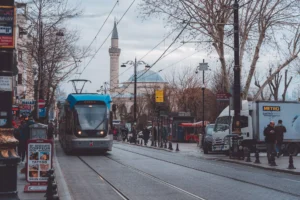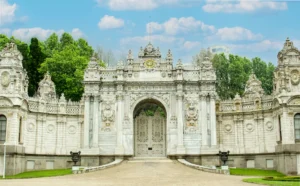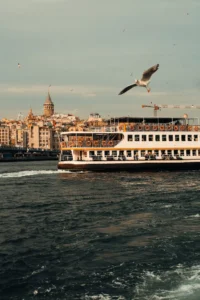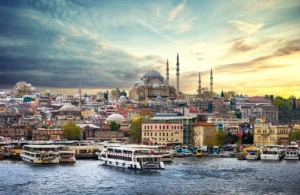Mosques are not only religious places but also cultural landmarks, attracting tourists from all over the world. As a result, it is important to understand and respect the mosque dress code when visiting these sacred spaces.
Visiting religious sites is always a spiritual journey, imbued with a sense of reverence and peace. However, some mosques offer more than just a spiritual experience; they are historical epitomes that narrate the tales of time, empires, and civilizations. The Blue Mosque and Hagia Sophia in Istanbul, are such mosques. Their architectural grandeur and historical significance make them much more than mere religious sites. They are testaments to the city’s rich history and cultural heritage, which is why they witness swarms of visitors every year.
Dress code in Istanbul’s mosques
Exploring the Hagia Sophia and the Blue Mosque in Istanbul is a truly exceptional experience that many travelers cherish. These magnificent architectural wonders carry a profound historical significance and serve as significant religious sites for both Christians and Muslims. Consequently, it is crucial to adhere to a specific mosque dress code when visiting these iconic landmarks. This comprehensive guide will equip you with all the necessary information to dress appropriately and respectfully during your visit to any mosque in Istanbul and throughout Turkey.
Why you have to visit the Hagia Sophia
The Hagia Sophia, a symbol of tolerance and harmony, is a must-visit for its unique blend of Christianity and Islam under one magnificent dome. Commissioned by Emperor Justinian, it was initially a cathedral before becoming a mosque, and now stands as a mosque open to all. Its intricate mosaics, towering minarets, and the awe-inspiring dome are encompassed with a rich history that dates back to the Byzantine Empire. The Hagia Sophia’s historical importance is deeply intertwined with Istanbul’s identity, being a landmark not only of two religions but also of two empires. Its historical significance, coupled with its spectacular architectural design, makes the Hagia Sophia an unforgettable sight, thereby emphasizing the importance of respecting the dress code when visiting.

Why the Blue Mosque should be on your bucket list
The Blue Mosque, also known as the Sultan Ahmed Mosque, is another jewel in Istanbul’s crown that you absolutely must visit. Commissioned by Sultan Ahmed I and built between 1609 and 1616, it stands as a symbol of the prosperity of the Ottoman Empire at its zenith. The mosque gets its colloquial name from the stunning blue Iznik tiles that dominate its interior walls. With its six minarets and an impressive dome, it is a visual spectacle that leaves visitors in awe. The Blue Mosque is not only a functioning mosque but also a major tourist attraction for its marvelous architecture and the peaceful spiritual atmosphere that it emanates. Furthermore, it’s the only mosque in Istanbul that can match the historical significance of the Hagia Sophia. Just like its counterpart, respecting the dress code when visiting the Blue Mosque is a sign of respect for its cultural and religious significance.
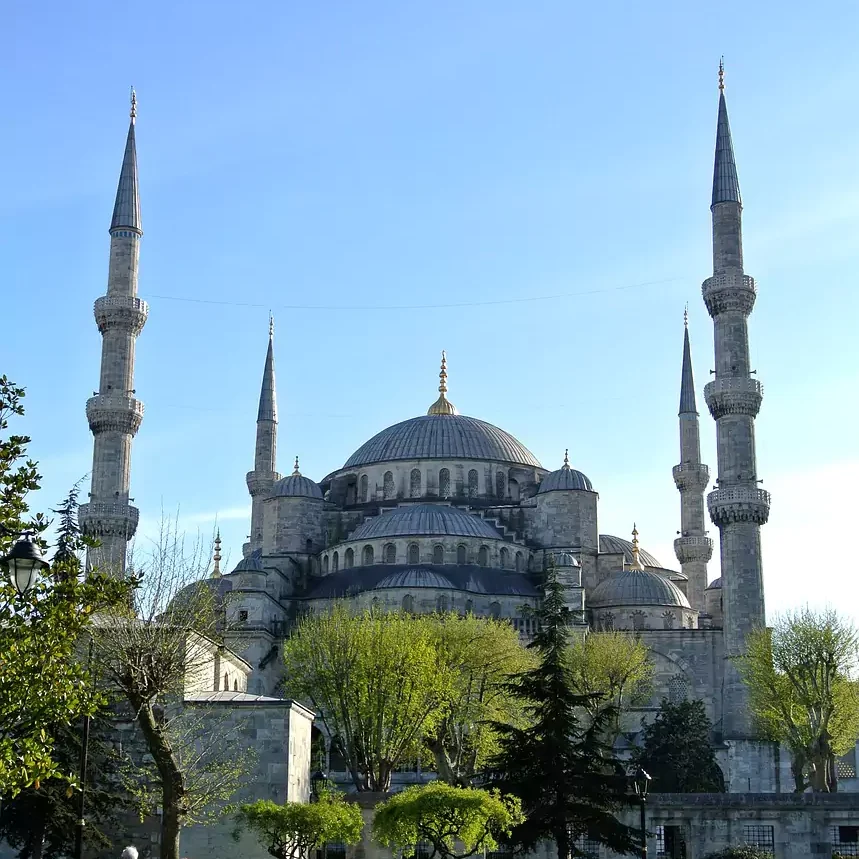
Dress code for Hagia Sophia and Blue Mosque
When visiting mosques such as the Hagia Sophia and the Blue Mosque, it’s important to dress modestly as a sign of respect for the religious customs and traditions. Both men and women are expected to cover their arms and legs, with women also required to cover their hair. Headscarves are typically provided at the entrance of both mosques for any woman who might need one.
As for footwear, it’s customary to remove your shoes before entering the prayer areas, so it’s advisable to wear shoes that can be easily taken off. Shoe bags are provided at the entrance to place your footwear in while you explore.
While the dress code may seem formal, it’s essentially about demonstrating respect and consideration. The Blue Mosque and the Hagia Sophia are not just tourist spots, but are also revered religious sites with a deep historical significance. So when planning your visit, remember, dressing appropriately only adds to the experience of appreciating these architectural marvels and understanding the culture that underpins them.
These mosque dress codes apply not only to the Blue Mosque and Hagia Sophia, but also to other mosques such as the Süleymaniye Mosque, Ortaköy Mosque, Eyüpsultan Mosque, and all other mosques across the country.

Dress code for women in mosques
- Women should wear loose and modest clothing that covers their bodies, such as long skirts, trousers, or full-length dresses.
- Women must cover their heads when entering a mosque. They can use a scarf or shawl for this purpose, and mosques like the Blue Mosque and Hagia Sophia usually provide headscarves at the entrance.
- In accordance with Islamic customs, women should dress in fully covered attire, ensuring their arms and legs are covered. Ideal clothing includes long-sleeved tops and ankle-length bottoms.
- Decent footwear is important, but remember to remove your shoes before entering the prayer areas. Choose shoes that can be easily slipped on and off.
Dress code for men in mosques
- Men should wear modest and respectful attire that covers from the shoulders to at least the knees.
- Loose and non-transparent clothing is preferred. Trousers, long shorts, and long-sleeved shirts are ideal.
- While men are not required to cover their heads, those who choose to do so may wear a cap or a turban.
- Footwear should be easy to remove as it is customary to take off your shoes before entering the prayer area. Shoe bags are typically provided at the entrance.
- The dress code also extends to behavior. Men should remain silent or speak softly, avoid smoking, and refrain from eating inside the mosque.

How to dress modesty in a mosque during summer months
- With temperatures often soaring during summer months, it’s important to dress accordingly while maintaining modesty in mosques.
- Lightweight and breathable fabrics such as linen, cotton, or rayon are ideal for both men and women.
- Women can opt for maxi dresses or loose-fitting skirts paired with a lightweight scarf.
- Men can wear long-sleeved shirts made of breathable material and pair it with lightweight trousers.
- It’s important to avoid transparent or form-fitting clothing, as well as shorts or tank tops.
The Importance of Dress Code in Mosques
One important aspect to keep in mind while visiting any religious site is to always show respect for the local customs and traditions. And this holds true for the dress code as well. In Turkey, it is not only considered polite but also mandatory to abide by the dress code when visiting mosques. Dress code in mosques is not only a religious requirement but also a sign of respect and deference to the place of worship. In Islam, modesty is highly valued and reflected in the way one dresses. The dress code for mosques varies depending on the region and cultural norms, but there are some general guidelines that apply universally.
Clothing to Refrain From When Visiting a Mosque
Visiting a mosque, such as the Blue Mosque or Hagia Sophia, requires adhering to certain dress code standards. Here are some elements to avoid:
Dress code for Women
- Avoid showing décolletage or wearing low-cut tops.
- Do not wear clothing that reveals the legs above the knees.
- Steer clear of too tight clothing as modest, loose-fit clothing is preferable.
- Refrain from wearing string tops or spaghetti strap tops.
For Men
- Avoid wearing shorts; opt for trousers or long shorts that cover the knees.
- Refrain from wearing tank tops, instead, wear a t-shirt or a long-sleeved shirt.
General rules
- Remember to wear clean socks as shoes need to be removed before entering the prayer area. This helps maintain the cleanliness and respect for the holy site.
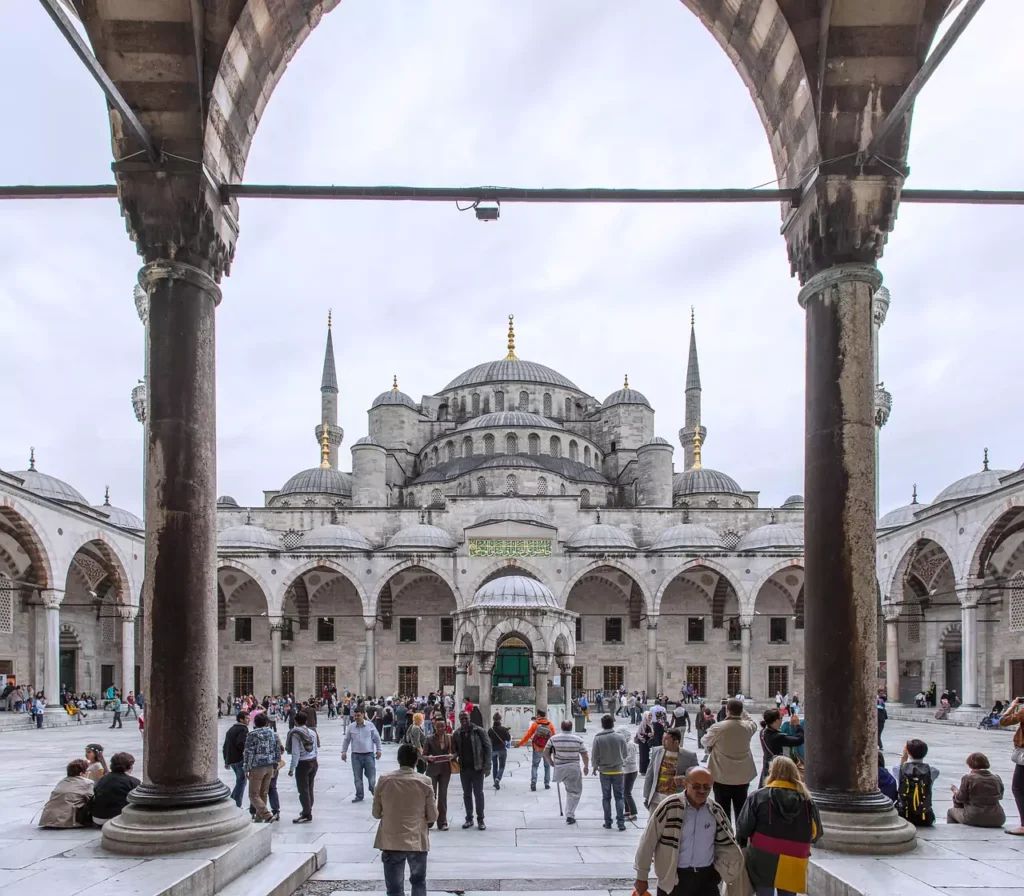
Etiquette Guidelines for Visiting a Mosque
- Show respect and remain quiet: Mosques are holy places for prayer and meditation, so it’s crucial to maintain a respectful silence.
- No photography without permission: Always seek permission before taking photos, especially during prayer times. Some mosques, like the Blue Mosque and Hagia Sophia, may have specific photography rules.
- No food or drink inside: Refrain from eating and drinking inside the mosque.
- Take off footwear: Custom requires removing shoes before entering the prayer area. It is not advisable to leave them outside unattended as you will be held responsible for any losses. Upon entering, bags are provided for you to conveniently carry your shoes with you.
- Follow the local customs: Observe and follow the customs and practices of the local people. This could include specific prayer times, designated gender areas for prayer, and more.
- Respect people praying by avoiding walking in front of them. Walking around them is preferred if possible.
- Prefer using the right hand in Islamic culture for actions like giving or receiving items, shaking hands, etc. However, strict enforcement may vary in places like the Blue Mosque and Hagia Sophia.
- Maintain silence and speak softly: In line with respect towards the spiritual ambiance of the mosque, it is important to maintain silence as much as possible. If you must speak, ensure that you speak softly so as not to disturb others who may be praying or contemplating in the mosque. This applies to all mosques, including the Blue Mosque and Hagia Sophia.
Other Considerations
It is important to note that these dress codes apply not only to mosques but also to other religious sites in Turkey. It is a sign of respect for the culture and traditions of the country to dress modestly when visiting these sites. Additionally, it is important to be mindful of cultural differences and local customs while traveling in Turkey.
Essential Tips for an Unforgettable Mosque Visit
Planning your visit to a mosque, especially to popular tourist attractions like the Blue Mosque and Hagia Sophia, is crucial. These sites often become crowded due to their significant historical and architectural appeal. To avoid the rush and enjoy a peaceful exploration, it’s recommended to visit early in the day. However, despite their tourist attraction status, these are still active religious sites where people come to pray. As a sign of respect, tourists won’t be permitted to enter during one of the five daily prayers. Same applies during the Friday noon prayer. Remember, understanding and respecting these customs will enrich your cultural experience and ensure a memorable visit.
